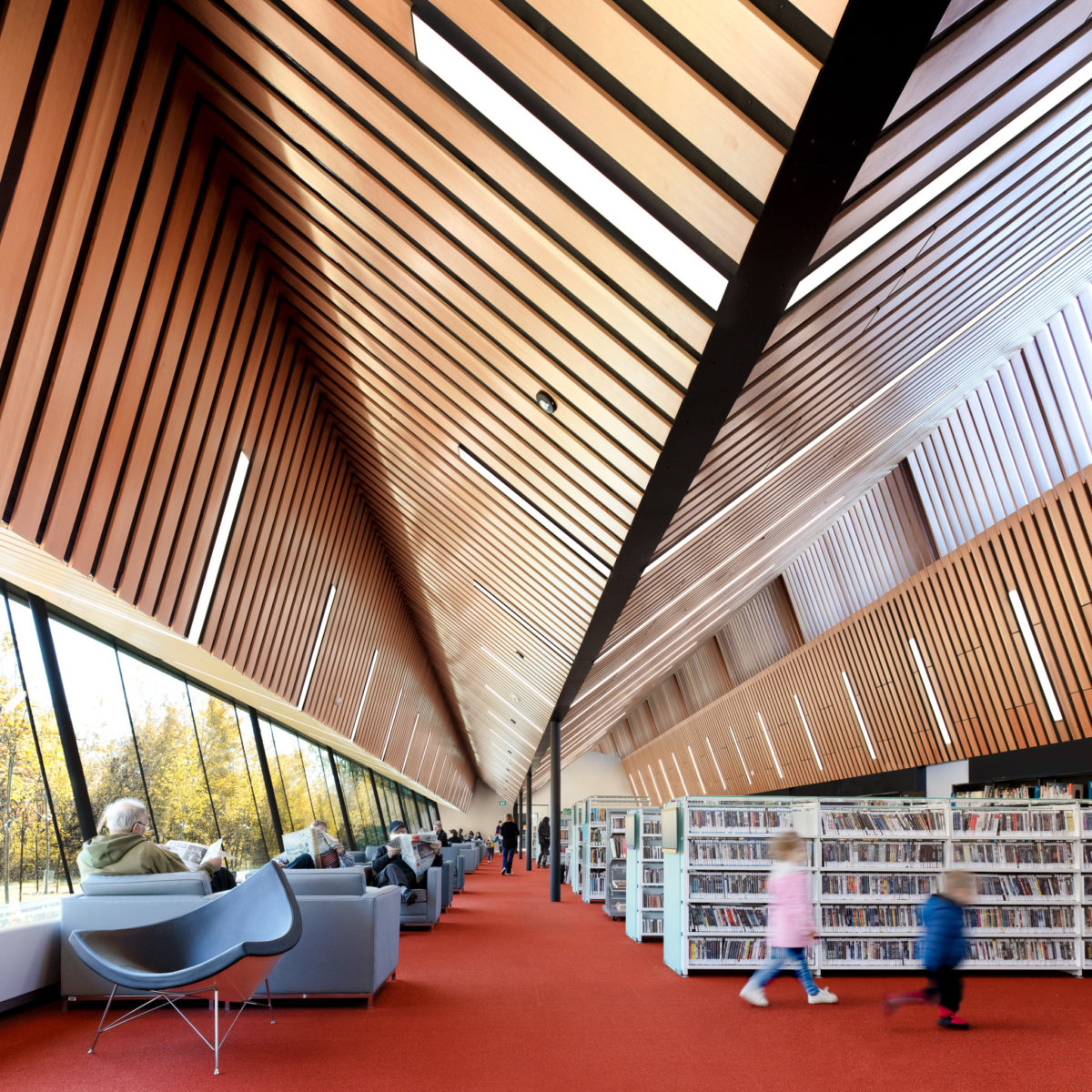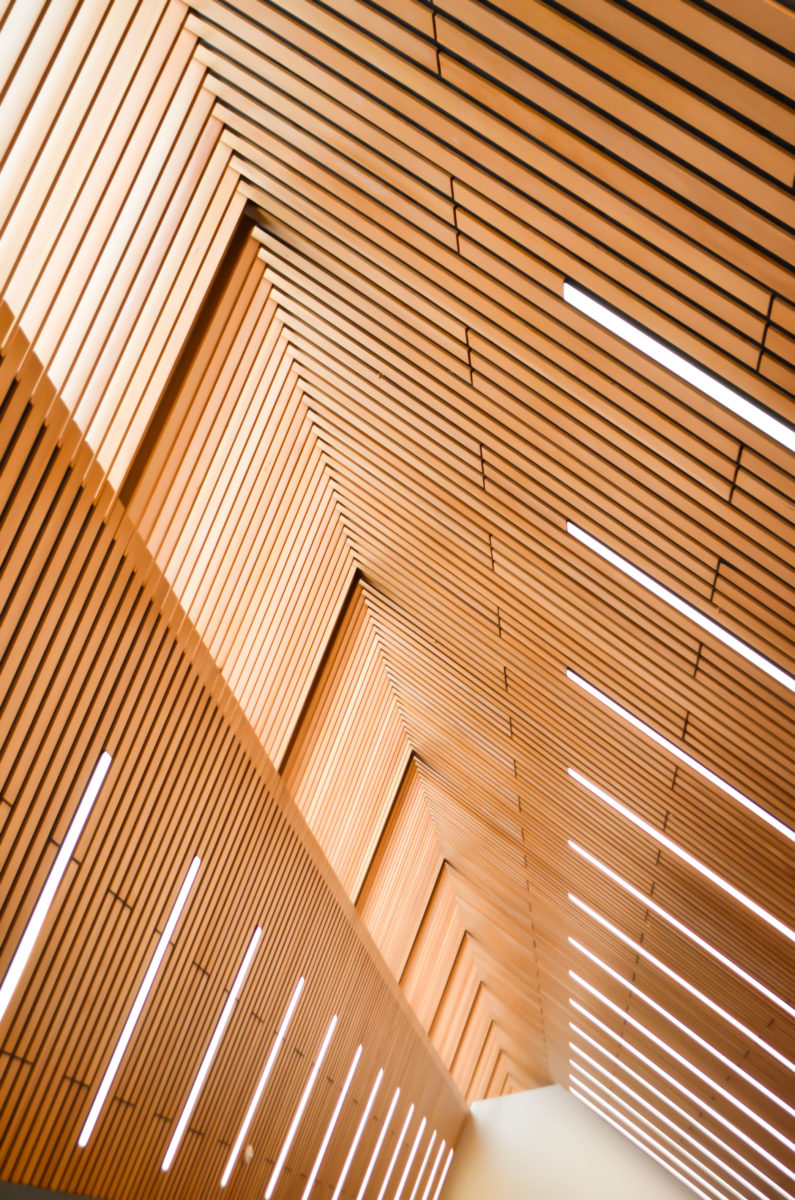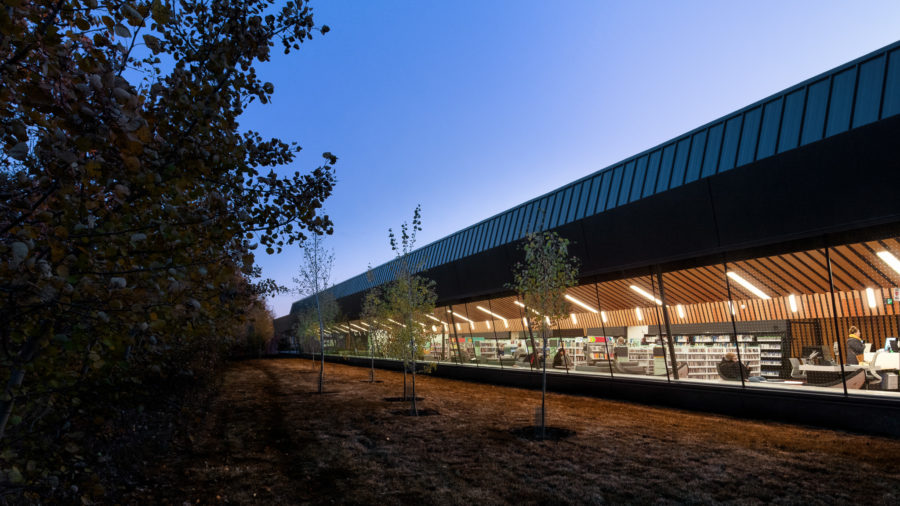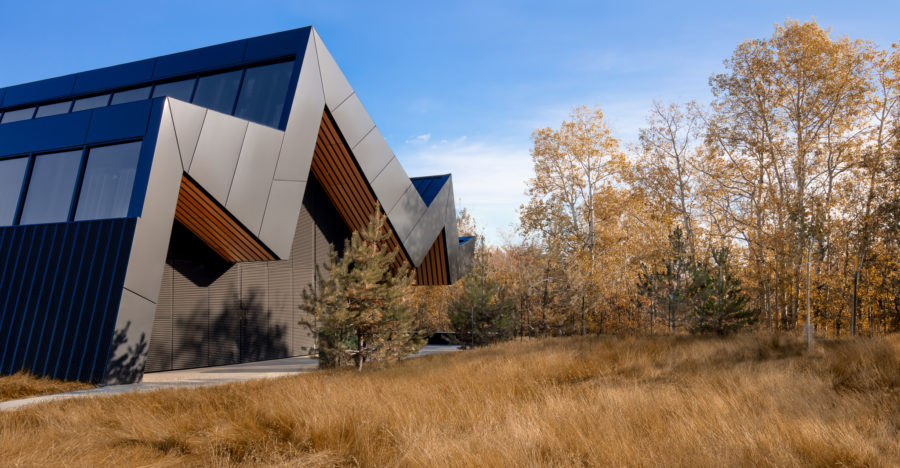Previously located on the second floor of the Capilano Mall, the Edmonton Public Library’s Capilano Branch needed a new home that would overcome its accessibility challenges. In 2015, input from a public gathering also dictated that a new facility provide generous amounts of natural light along with community rooms, private and semi-private meeting and study spaces.
The building site offered an additional challenge: a narrow, 60-metre wide grassy site, bordered on one side by Edmonton’s Fulton Ravine and a neighbourhood street on the other.
Project Essentials
- LocationEdmonton, AB
- ClientEdmonton Public Library
- ArchitectPatkau Architects and Group2
- BudgetCAD $11.8 million
- Size11,000 ft² (1,022 m²)
- Sustainable FeaturesCertified LEED Silver



